Analysis of 7 major electromagnetic shielding materials and applications
Electromagnetic shielding materials (EMI/EMC)
With the rapid development of science, technology and electronics industry, various digital, high-frequency Modernized electronic and electrical equipment radiates a large amount of electromagnetic waves of different wavelengths and frequencies into space during operation, resulting in new environmental pollution – electromagnetic interference (EMI) and radio frequency or radio interference (Radio Frequency Interference, RFI).
At the same time, electronic components are also developing in the direction of miniaturization, lightweight, digitization and high-density integration. Their sensitivity is getting higher and higher, and they are easily affected by external electromagnetic interference and cause malfunctions and images. disorders and voice disorders, etc. The electromagnetic interference caused by electromagnetic radiation only affects the performance of electronic products, and the resulting electromagnetic pollution can cause serious harm to humans and other organisms.
To this end, international organizations have proposed a series of technical regulations requiring electronic products to comply with strict magnetization coefficients and emission guidelines. Products that comply with these regulations are called electromagnetic compatibility EMC (Electromagnetic Compatibility).
For design engineers, using absorbing materials for EMI shielding is an effective way to reduce EMI. For different interference sources, choose the optimal absorbing material after considering the installation size and spatial location, so as to ensure that the system achieves the best shielding effect.
Introduction to electromagnetic shielding materials
Conductive cloth
1. Fiber cloth (generally commonly used polyester fiber cloth) is pre-processed and then electroplated with metal coating Make it have metallic properties and become conductive fiber cloth. It can be divided into: nickel-plated conductive cloth, carbon-plated conductive cloth, nickel-plated copper conductive cloth, aluminum foil fiber composite cloth. There are distinctions in appearance between plain texture and grid;
2. The most basic layer is highly conductive copper, and the outer layer combined with nickel has corrosion resistance;
3. Nickel/copper/ Nickel-coated polyester fiber cloth provides excellent conductivity, shielding efficiency and corrosion resistance to meet the requirements of various ranges. The shielding range is 100K-3GHz.
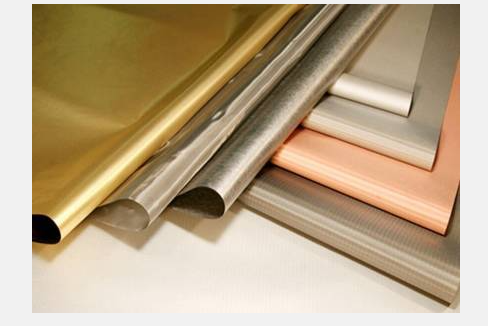
Application fields:
Available Professional shielding work clothes for high-radiation work such as electronics and electromagnetics, special shielding cloth for shielding rooms;
Special cloth for IT industry shielding parts, touch screen gloves, radiation-proof curtains, etc. It is widely used in PDA handheld computers, PDP plasma display screens, LCD monitors, notebook computers, copiers and other electronic products where electromagnetic shielding is required.
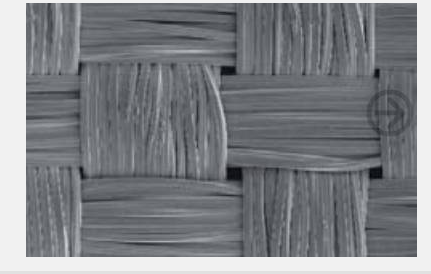
Conductive cloth liner
Conductive cloth liner is made of high conductivity and anti- It is composed of corrosive conductive cloth and a highly compressed and elastic foam core inside, which is precisely processed. Conductive cloth lining has good electromagnetic wave shielding effect. It can be processed into various shapes and sizes according to customer requirements and is widely used in EMI shielding materials/EMC prevention for various electronic products.
Application fields:
Conductive cloth gasket is suitable for electromagnetic shielding, anti-static (ESD) and grounding of various electronic equipment. It can be widely used in electronic chassis, casings, indoor chassis, industrial design, notebook computers, mobile communication equipment, etc.
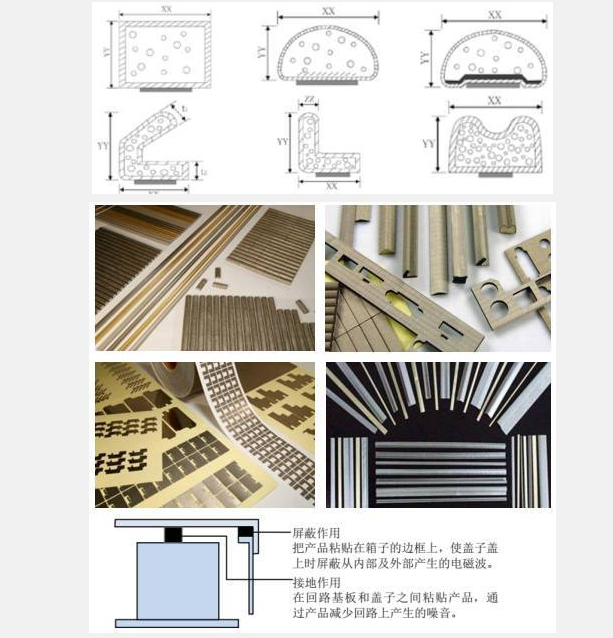
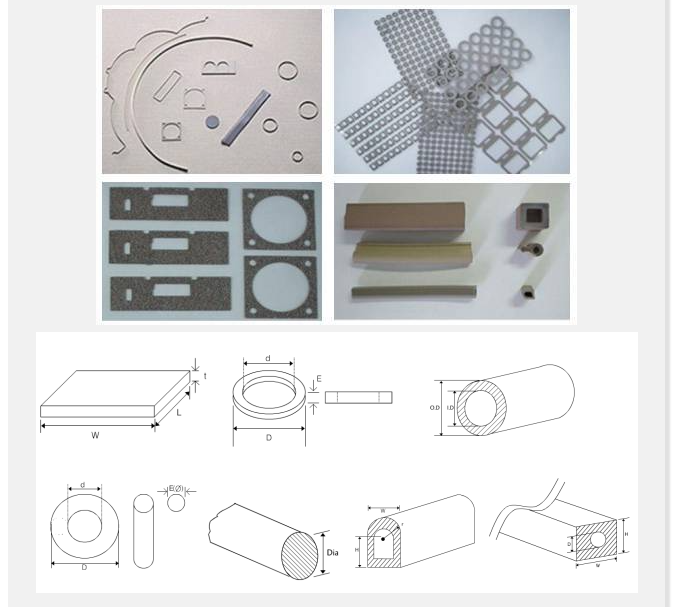
Conductive rubber (strip)
Conductive rubber is a rubber material filled with metal fillers, providing It has the functions of high conductivity, electromagnetic shielding, and moisture-proof sealing. This material can be formed into sheet, molded, extruded and film shapes according to requirements.
Application fields:
Conductive rubber is used in areas that require excellent long-term electromagnetic shielding and high conductivity. It is widely used in communication equipment, information technology equipment, medical equipment, and industrial electronic equipment markets.
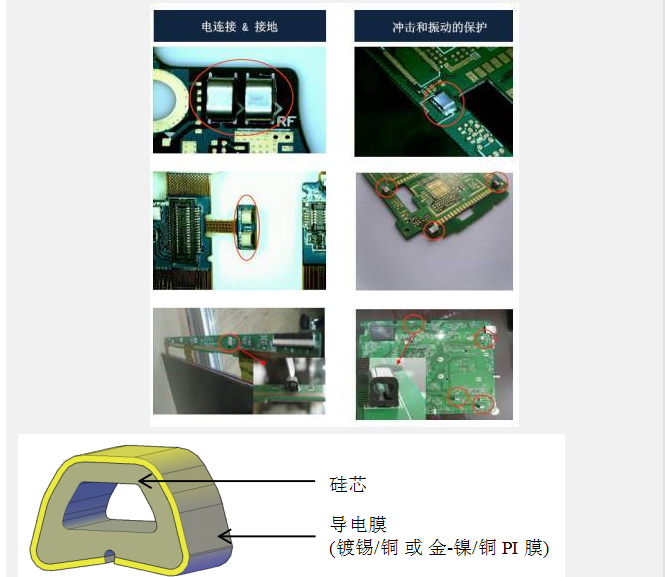
STM patch foam
SMT patch foam is a ground terminal that can be used in surface mounting technology and is one of the surface mounting components. In electrical/electronic equipment, it is an EMC countermeasure accessory that prevents malfunction due to unnecessary electromagnetic waves or reduces noise caused by EMI shielding materials. It is a ground terminal that can be soldered to the PCB.
Application fields:
PCB grounding that can be surface mounted at high speed, has suitable electrical conductivity, excellent heat resistance and grounding characteristics, and has excellent durability and reliability Conductive elastic terminals, when electrical/electronic machines are impacted by external impacts or drops, SMT patch foam has excellent impact absorption characteristics and has the function of protecting internal accessories as a buffer.
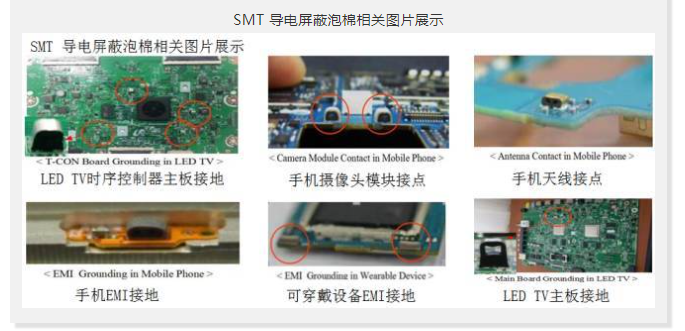
SMT conductive shielding foam���Related picture display
Conductive silica gel
1. Conductive silica gel is a paste material, which is divided into single/two-component packaging and normal temperature/high temperature curing conductive silica gel. Currently on the market Commonly used materials on the market mainly include silver/copper, silver/nickel, nickel/carbon, etc.;
2. Suitable for FIP (Form In Place) on-site molding process and used for precision dispensing machines. , can be dispensed into D-shaped, triangular, and wavy shapes;
3. Excellent shielding performance and mechanical performance;
4. Lower viscosity shortens the dispensing cycle Thereby improving production efficiency;
5. It has good adhesion on most metal surfaces;
7. The curing time of conductive adhesive at room temperature is 12 to 24 hours, and it is conductive at high temperature. The glue curing temperature is 150 degrees Celsius for 30 minutes;
8. Conductive silicone has been proven to have good reliability and good resistance to electrolytic corrosion through strict outdoor environmental tests, and is more suitable for use in harsh outdoor environments. It can also ensure its performance is very stable in harsh environments such as heat, cold, humidity, ultraviolet light, ozone and locking for a long time;
9. The working temperature range is -55 degrees Celsius to +125 degrees Celsius. between.
Application fields:
Conductive silica gel is mainly used in communications, electronics, military, security, and automotive industries. It can be widely used in wireless base stations, repeaters, filters, mobile phones, and handheld devices. Electromagnetic shielding on the casings of wireless equipment such as computers, laptops, car central controls, cameras, walkie-talkies, and security equipment. It has better shielding performance when used on aluminum alloy and other die-casting parts.
Photo display related to EMI shielding material shielding and sealing conductive silicone
Conductive paint
Anti-electromagnetic interference shielding paint, commonly known as conductive paint.
Conductive paint uses composite particles containing copper, silver, etc. as conductive particles, and is a paint with good conductive properties.
Conductive paint is sprayed and brushed to make a completely insulated non-metallic or non-conductive surface have the same characteristics of absorbing, conducting and attenuating electromagnetic waves as metal, thereby shielding electromagnetic wave interference.
Technical parameters
Conductive effect: ≤0.025Ω/cm² (paint film thickness is not less than 20μm)
Application conductive parameters: 1Ω/20μm film thickness/ Distance 10cm
Recommended film thickness: 20-25μm
Electromagnetic wave absorbing material
1. The absorbing material is a magnetic material, a magnetically permeable composite soft Magnetic materials;
2. High-performance sheet absorbing materials, suitable for designs in narrow spaces;
3. Non-conductive acrylic adhesive and high adhesive strength make installation easier Reliable;
3. Can be used to suppress any electromagnetic wave noise that occurs around consumer electronic equipment such as electromagnetic waves/harmonic noise/crosstalk, etc. that occur on the PCB;
4. Generally suitable for the absorption of electromagnetic waves in the band from 13.56MHZ to several 8GHZ, especially suitable for the absorption of discrete noise generated by PCB and RF signal sheets and FFC (flexible flat)/FPC (flexible) cable signal stations;
5. Thin or flexible materials can be used in portable devices;
6. Can be made into a variety of shapes and sizes to suit a wide range of applications;
7. Suppress electromagnetic resonance;
8. Anti-interference of electromagnetic waves;
9. Suppress electromagnetic noise of all types of electronic equipment;
Application fields:
Absorbing materials are mainly used in communications, electronics, aerospace, military industry, navigation, medical care, environmental protection and many industrial sectors that use microwaves and high frequencies. They are widely used in electronic digital products, wireless charging, RFID radio frequency identification, and mobile communications. Equipment, wireless equipment, office automation equipment (personal computers, TFT LCD, etc.), audio/video communication equipment terminals, digital switches, flexible circuit boards, high-speed CPU chips, image processors, oscillation chips, storage chips, high-speed signal line speed, Shield inner shell, high-speed microprocessor, etc.






